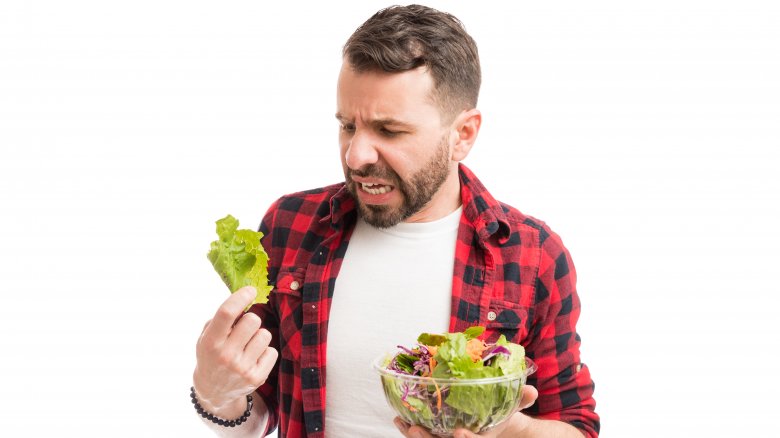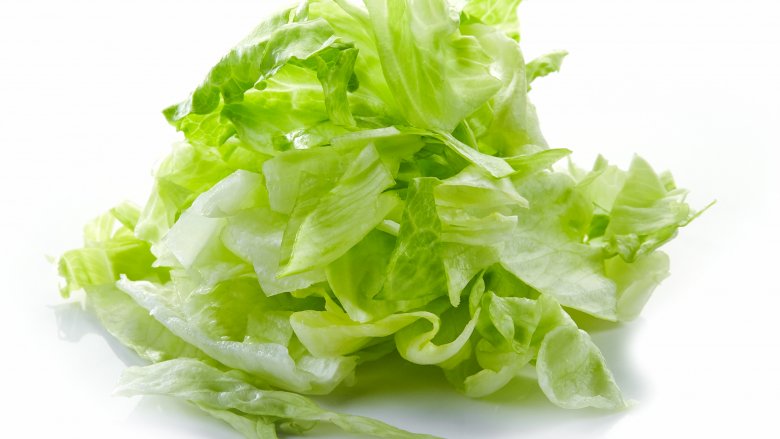Is Brown Lettuce Safe To Eat?
Whether it's some leafy greens on your burger, in a wrap, or on a salad, most of us would prefer that our lettuce be green. A lettuce leaf that has a few brown spots or is showing signs of red and pink hues is less than appetizing. It's certainly not going to make for a hot seller at the supermarket. So what's up with these less-than-fresh-looking leafy greens? Is it safe to eat brown lettuce, and why the odd color change?
Let's break this salad query into two parts and first address why your lettuce may have some browning or has started to turn a pink or red color. The good thing is that if your lettuce has some color change, it's probably not a result of disease in the plant. According to SF Gate, lettuce usually begins to turn brown after its stems have been cut as air exposure activates certain enzymes in the lettuce.
You can eat brown lettuce, sometimes
Failure to slice the lettuce plant off as close to the root as possible during harvesting isn't the only culprit in color change here. If the lettuce was stored around a bunch of apples, peaches, pears, or tomatoes, this could result in the lettuce changing to that unappealing rusty red or pink color. This is because these fruits give off high levels of the gas ethylene which speeds up the ripening process. Cold temperatures in an extra chilly fridge might also result in browning lettuce because the cold breaks down the cell walls in the lettuce leaves, which can lead to rot. Keeping your lettuce in the crisper drawer, as opposed to the bottom shelf in the back of the fridge where it's the coldest, will help prevent this.
As for eating lettuce with some brown areas, well, here's the good news. You can confidently tell your children that they still have to choke down that brown lettuce because it's perfectly safe to eat (via Berkeley Wellness). However, it may have lost some of its nutritional value and probably won't taste quite as fresh as the day you bought it, so feel free to trim those brown parts before adding it to your salad. Now, it's important to note, that if the lettuce is slimy or has begun to grow mold, it should most certainly be tossed out — brown spots or no brown spots (via Livestrong).

